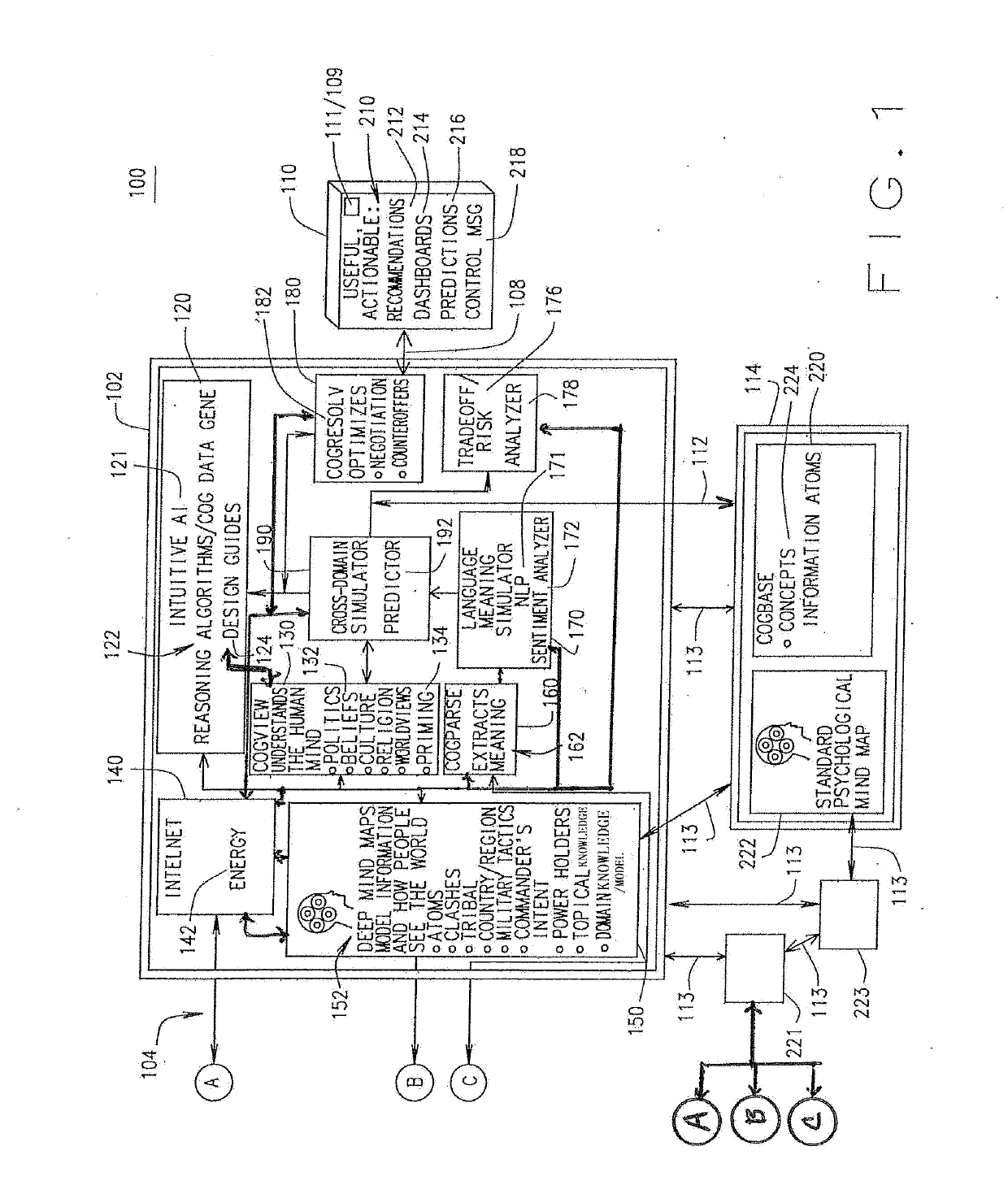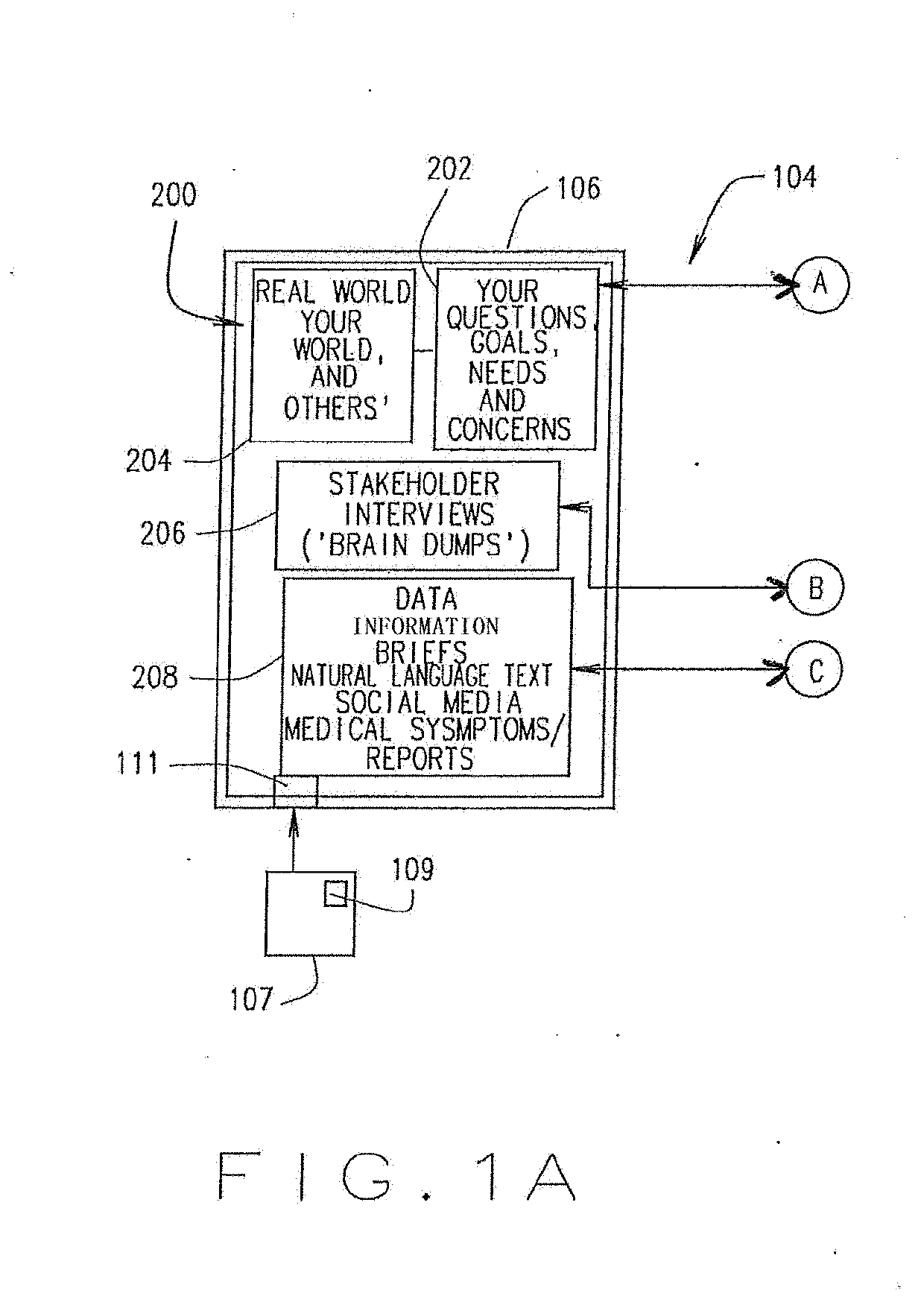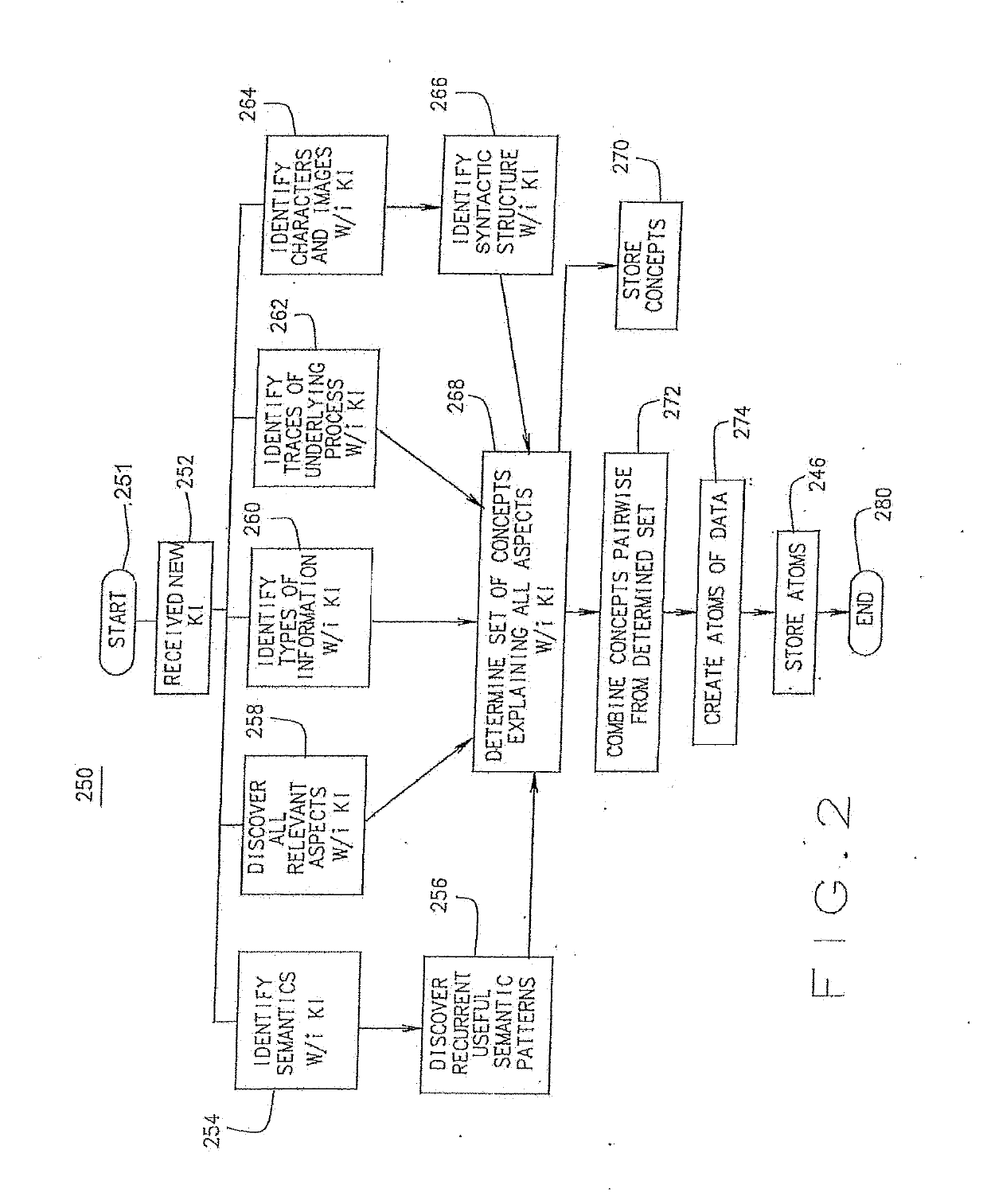Systems and Methods for a Universal Task Independent Simulation and Control Platform for Generating Controlled Actions Using Nuanced Artificial Intelligence
a technology of nuanced artificial intelligence and simulation, applied in the field of systems and methods for using artificial intelligence, can solve the problems of inability to model nuanced, holistic data, and inability to fully meet the potential of real-world objects/processes, etc., to achieve the effect of rapid and accurate reuse of information, great speed and accuracy, and greater speed
- Summary
- Abstract
- Description
- Claims
- Application Information
AI Technical Summary
Benefits of technology
Problems solved by technology
Method used
Image
Examples
application embodiments
[0599]General Ranking and / or Recommendations
[0600]In one embodiment, the system provides general capabilities for ranking and recommendations, in that it allows for the computation of a goodness score for each item in a set. These are derived from final energy scores. Depending on the models used, the highest energies can translate into the highest scores; in other cases, a more nuanced function can be required.
[0601]Optionally, the general ranking / recommendation functionality can employ one or more of the additional post-processing steps described in this application, including but not limited to goal inference for products, emotion simulation, or any combination thereof.
Rank and / or Recommend Products
[0602]In this embodiment, in addition to other types of models, the system employs domain models consisting of information about various products, including but not limited to what they are, how they can be used, what they are capable of accomplishing, who tends to use them and why, an...
PUM
 Login to View More
Login to View More Abstract
Description
Claims
Application Information
 Login to View More
Login to View More - R&D
- Intellectual Property
- Life Sciences
- Materials
- Tech Scout
- Unparalleled Data Quality
- Higher Quality Content
- 60% Fewer Hallucinations
Browse by: Latest US Patents, China's latest patents, Technical Efficacy Thesaurus, Application Domain, Technology Topic, Popular Technical Reports.
© 2025 PatSnap. All rights reserved.Legal|Privacy policy|Modern Slavery Act Transparency Statement|Sitemap|About US| Contact US: help@patsnap.com



